Saturday 16 October 2021
I was fortunate to be part of a full day tutor-led workshop, where tutors, Dianna Ali and dr Michelle Whiting took the lead.
The invite suggested that the workshop will involve a day of practical making around your practice, considering how you see the visual world around you that you can infer back into your coursework whilst community building and meeting new peers. Please have your choice of art materials and sketchbook ready to work. This workshop is part of an ongoing series of events that have taken place since the original OCA Lisbon trip in 2020. However, no prior knowledge is needed to attend.
Students came from different study pathways and we had a short introduction session. Tutor Michelle Whiting gripped a part of my soul when she shared her moment of realizing a connection with art as a young child in front of P de Longhi’s work, The Rhinoceros ( 1751) …..the story of Clara the Indian rhinoceros and the human fascination with exotic animals, has been a big part of my own research and drawing when I made a print of this work, see below. (my blog, Contemplating Rhinos, is on my website)
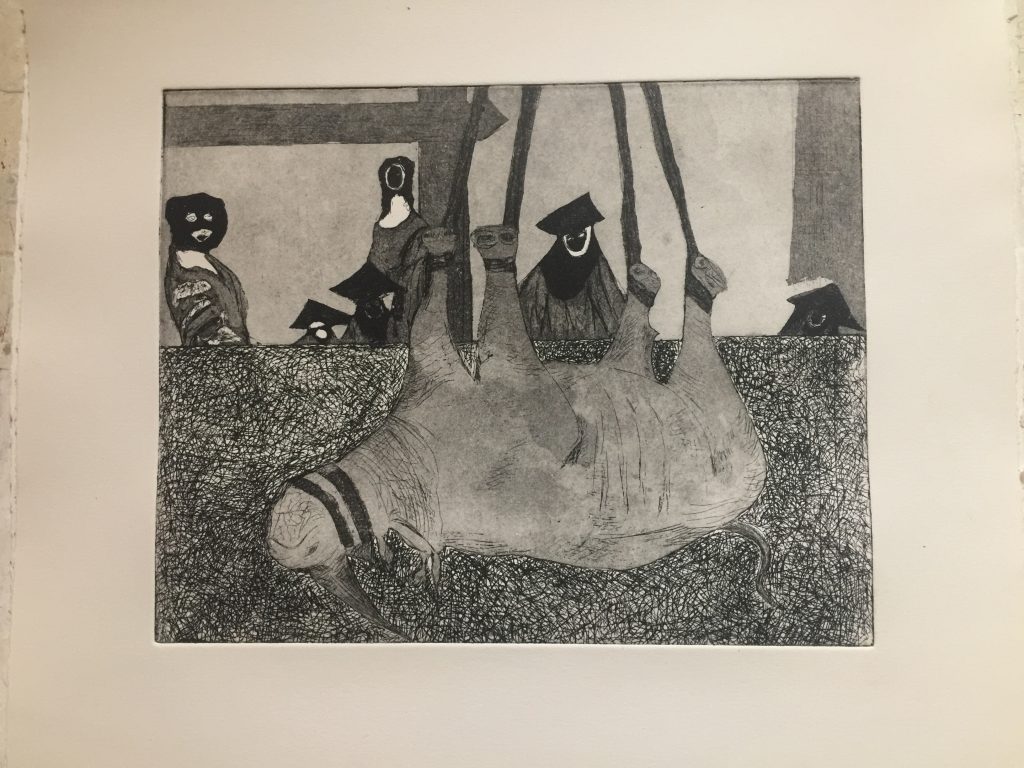
The first idea was that of making together, but focussing on observation, how we look and take in details, and continue on to unpack the elements. Ideas of making contact or connections with the subjects came forward, a form of presentness, being tactically engaged, sensing it, and not necessarily directed outward. Michelle shared her memory of an exhibition where the artist suggested people partake in smelling artbooks ( at the MET?)
So the making started by gathering a number of things in one place. Below is my choice, which is influenced by my current work in my studies around constructing narratives and ideas I had with the work of Velazquez, Las Meninas. Participants shared their gatherings with the group.
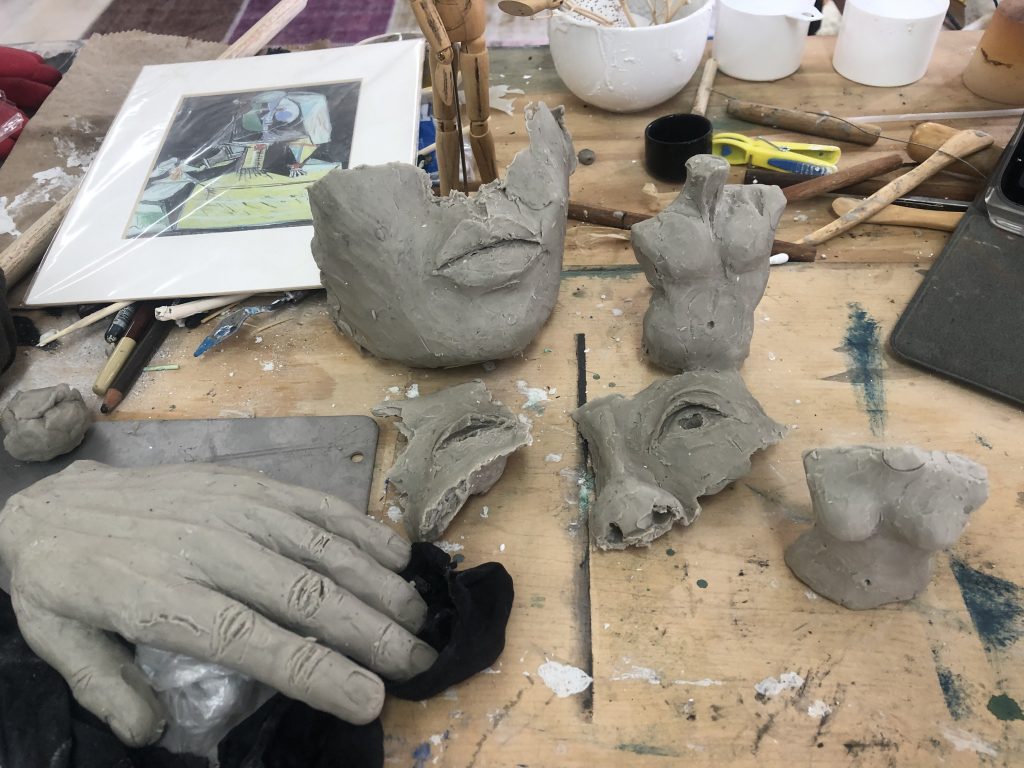
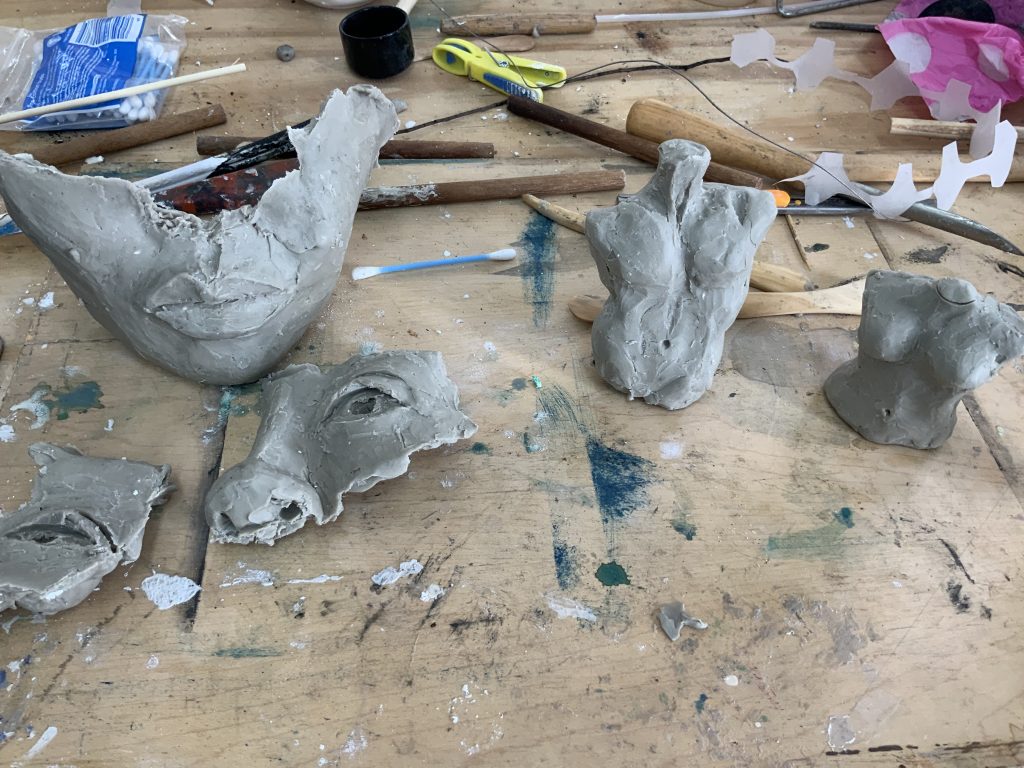

We listened to a short reading from Jane Bennet, Vibrant Matter. Ideas around our understanding of assemblage were discussed. Bennet takes her ‘cue’ from Deleuze and Guitarri as assemblages as ad hoc groupings of diverse elements, of vibrant materials of all sorts. We consider the vital nature of the components, how they function differently. We also consider it to be an open-ended collective but that it could end at a point – a point in time or by a decision or choice. (My grouping consists of a copy of a Picasso drawing and clay objects. I looked at assemblages as an ‘event of choreography’ when I applied it in this first exercise – I felt like staging these objects but with an awareness/knowledge of their own histories and ideas attached to them.)
The first making in this process was to observe through making a contour drawing of the gathered things/objects. I rearranged my objects and had a close look at the copy of the work of Picasso I included, as I wanted to consider his cubist ideas in my own making. The hand was included as I needed to figure out how I will use it to staging the body in earlier work as part of Part 3 of my current studies, busy working on.
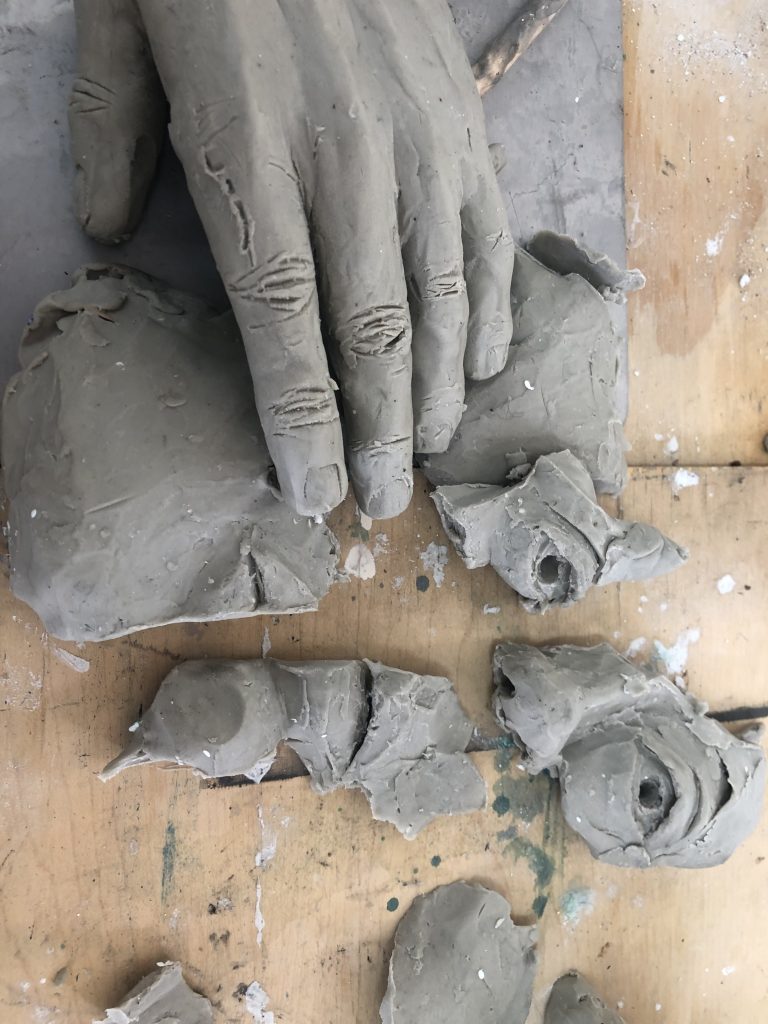
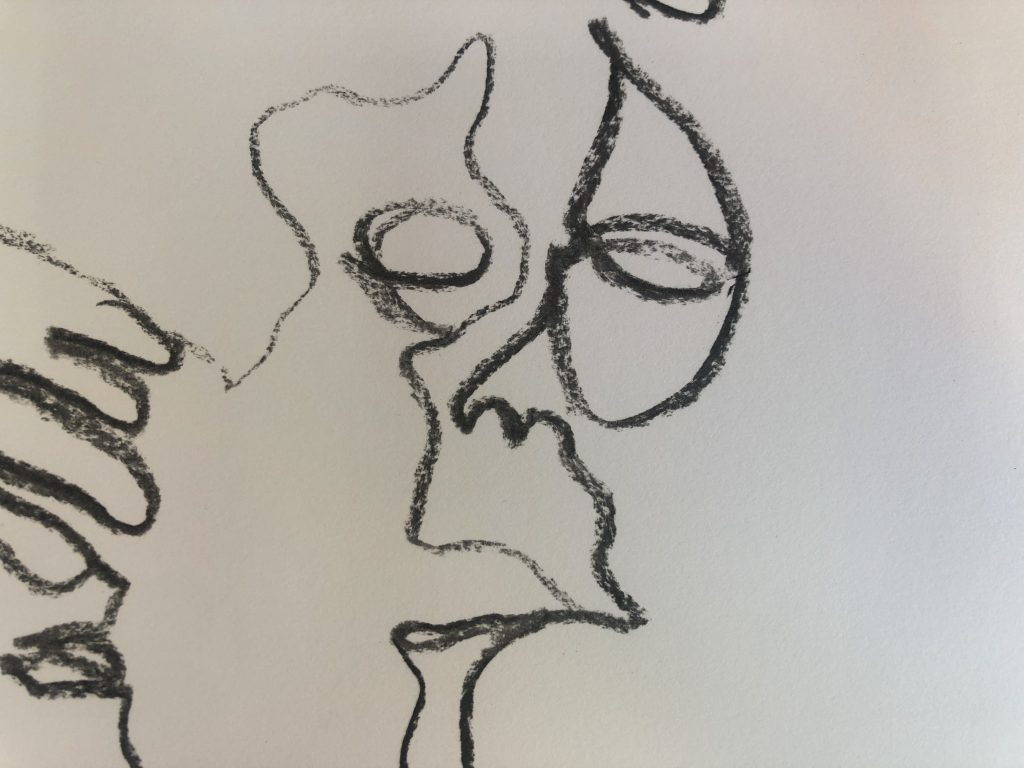
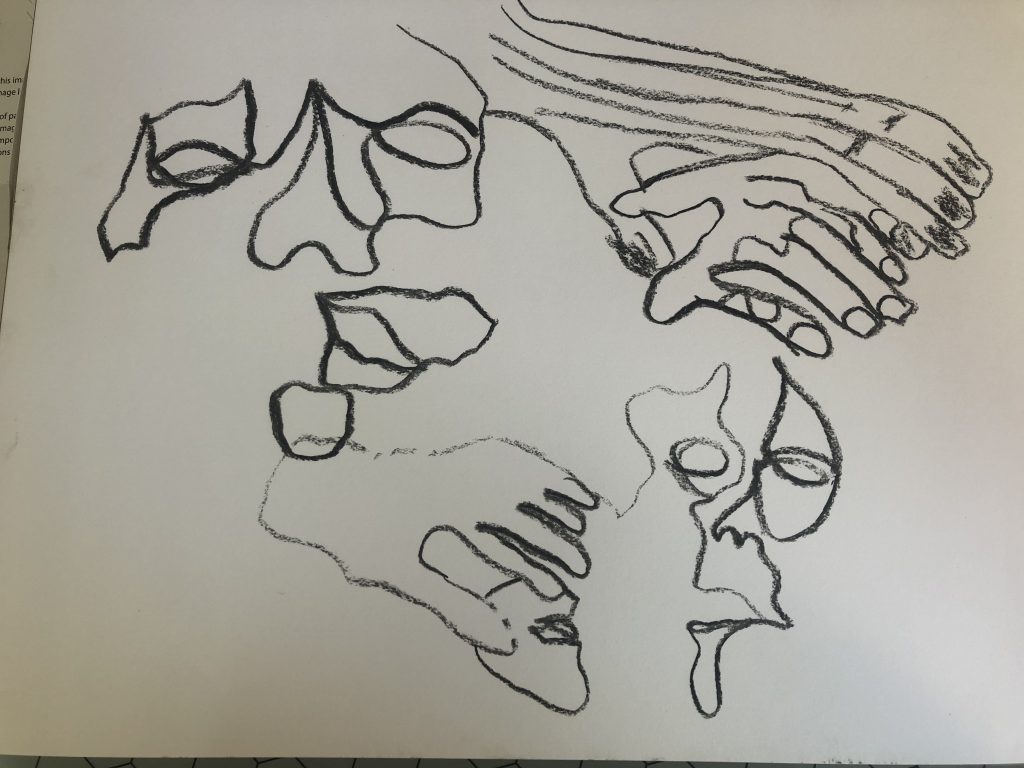

This experience was freeing up the way I look at these almost familiar objects which I made earlier, I touched and worked them with my hands. Drawing them as lines were a different way of looking at them, looking at the edges and almost placing that in space. I see other 3d possibilities in them, but I also like them being broken down into different parts, and then to be assembled again as something new.
The next exercise was drawing/painting/making with the non-dominant hand, for me, it is working with my Right hand. In the drawing in charcoal below, I felt uncomfortable I want to follow certain forms, like the curved or circular forms, I also felt a need to work into the drawing with my fingers and my right hand was quite easily doing the movements. Interesting is when I looked at this drawing later, I see a lot of realism. Did I focus more on what I thought I should see? It almost felt like a form of self portrait.
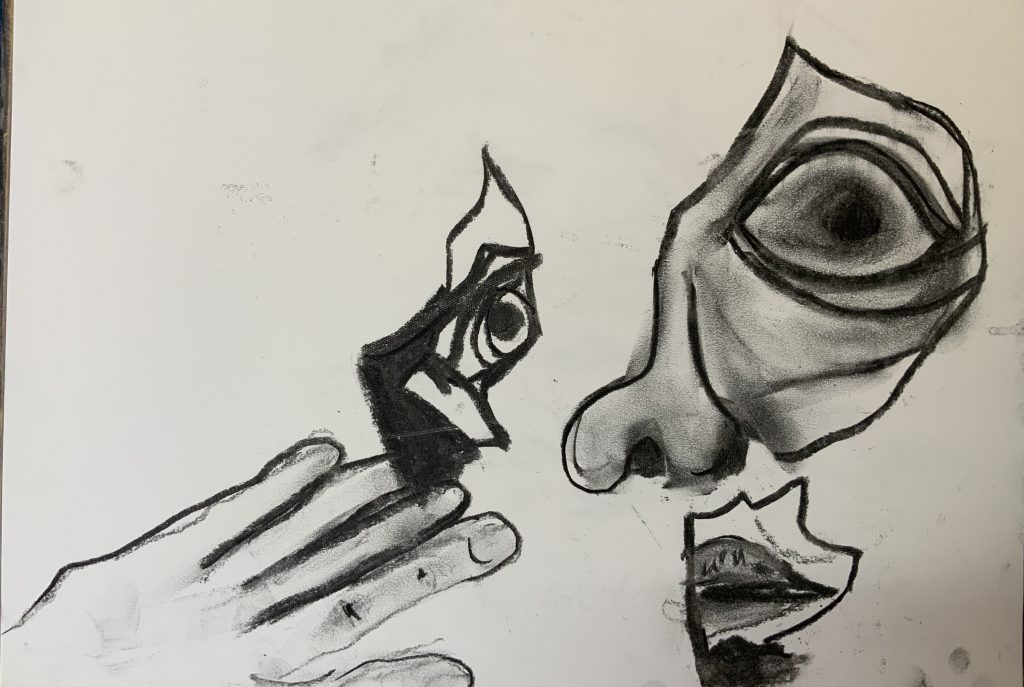
Below we did the next exercise which was drawing blind. Observe the things and then, turn your back and draw them as you remember. I felt bolder to draw bigger, and worked on wallpaper paper, and enjoyed the process of drawing in a loose and freer style of working. I was not concerned to make ‘mistakes’ as I was dealing with a visual thing I wanted to create.

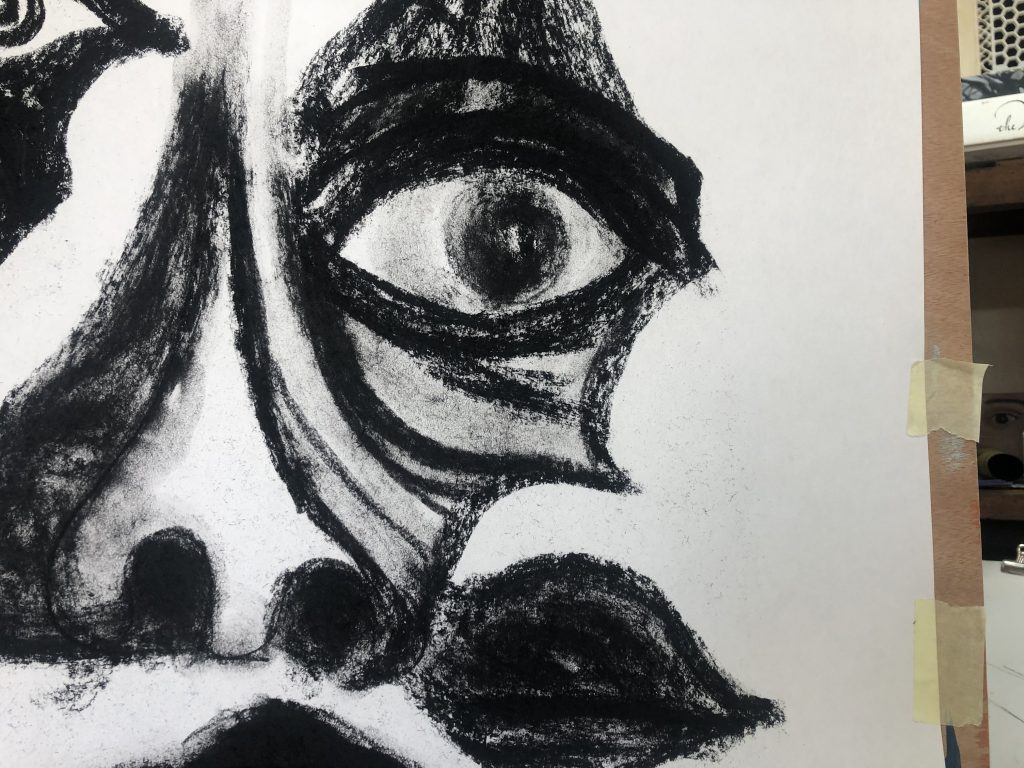
The last exercise in the first part of this session was drawing by touching. I blindfolded myself with a mask and felt very lost in this process. My focus was on touching and how this will relate to marks and lines I was trying to make. Ideas around the cold clay, softness, curves and form stood out in the process. I felt my lines and marks became repetitive, but being blindfolded helped to stay with those moments of finding my way from touch/senses to translating it onto the paper. I later wished I had chosen a softer pencil or even paint. This is an exercise I would like to come back to. Words like confabulation came up in the discussion. Suggested reading is John Berger, Confabulations and What painting is, by John Berger. a short piece: “in my hands from past to future I’ll grab two stones and run with them. Even in the lightest breeze I’ll fly, Summon a wind, to come and wipe out every trace and I’ll sit like an orphan by the roadside, mourning my two stones. Lovely way to deal with history/memories/the past ….all meeting and feeling connected, that time is not linear, but circular……does it say something of impertinence.

Part two of the session was focused on development. How do we progress from an original idea, this process of making work? Words that came up was, building up, evolution, reflecting, editing, moving on, grow, allowing to evolve, to elaborate, to refine, presence. Working on the very edge of our knowledge.
Ideas around defamiliarization came through in the discussion, whilst making. Afterward, I read about Victor Shklovsky, a Russian critic, and how taking the object into a strange unfamiliar, empty space, away from its normal context, the familiarity, gives us a new experience. It is as if this distorting slows down perception and makes the world strange again. I started breaking the work into different parts, the eyes, nose, mouth….cut them. I feel I moved into a new place with these objects, a different awareness, where I could disrupt and be brave to bear with it. I consider the meaning and making meaning out of forms, in my case facial and bodily parts, and then ideas I carry around and brought into this space today.
Whilst working on my hand, I became aware of marks and a scar on my hand. On my left thumb, I have a mark of an operation after the tendon was cut off in an accident, whilst cleaning a mirror. I am so grateful for the recovery and subsequent good use I have had of my thumb since the accident.
I started on an appropriated drawing of Picasso’s painting of the little Infanta with charcoal and pastels. I want to develop this with the ideas of the dress and the female body in the work I currently do for my studies. ( Studio Practice, Part 3) I also consider the work of Rachel Baes in this work – the space in which the Infanta is placed as well as exploring ideas of Surrealism.
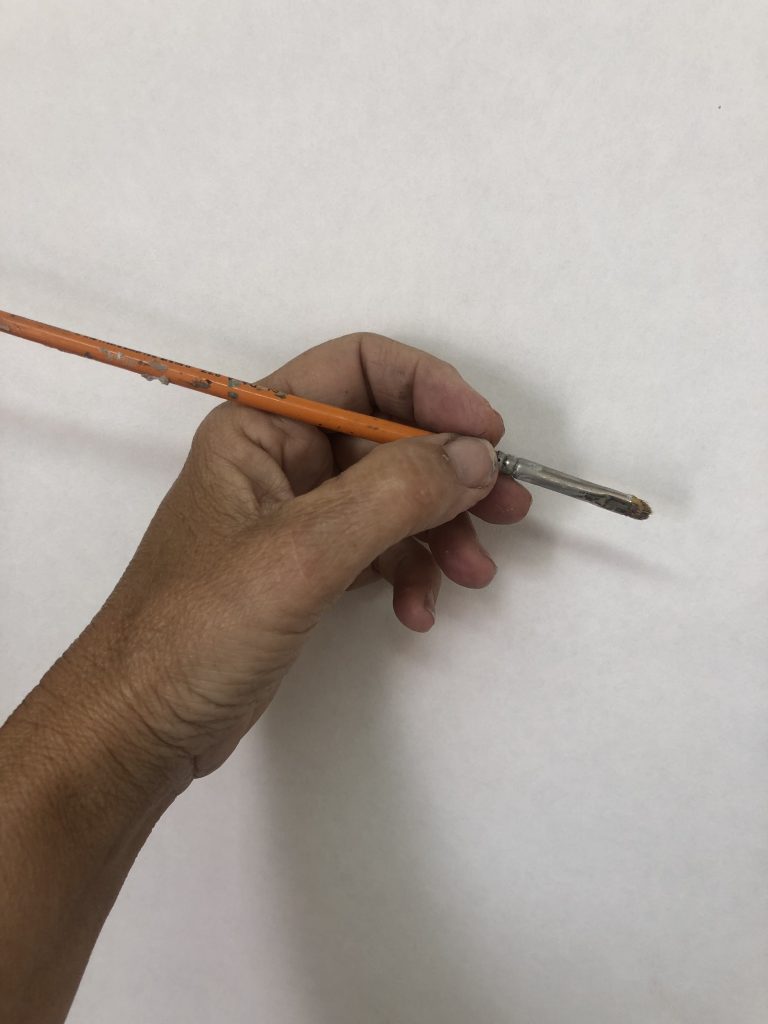

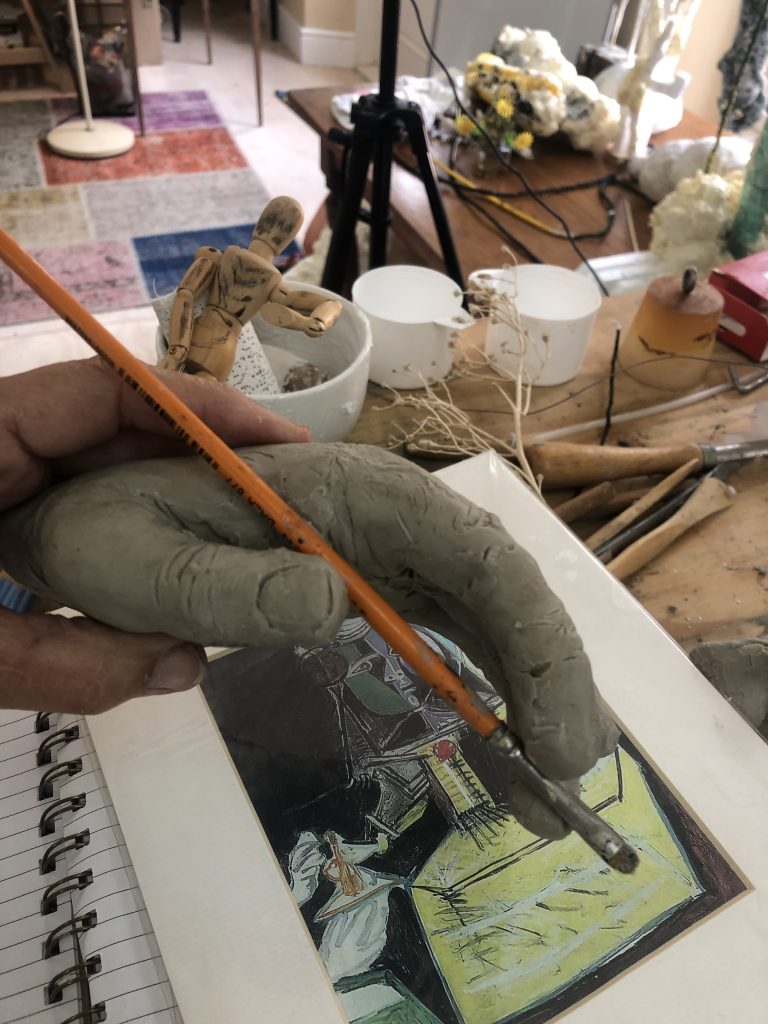
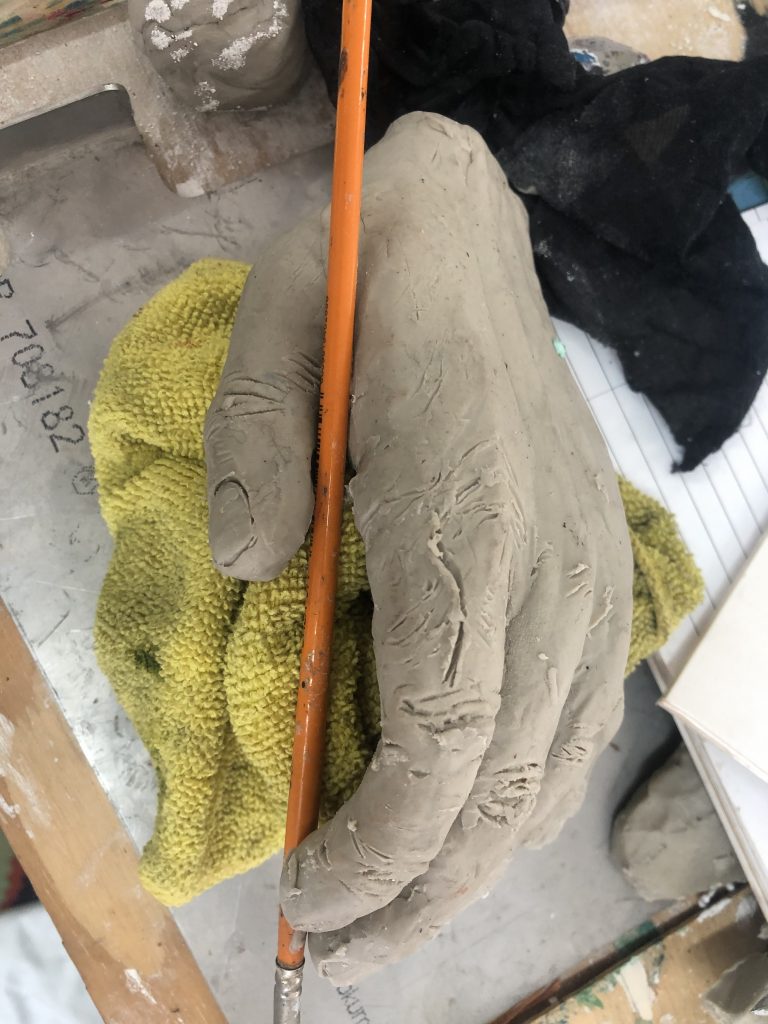
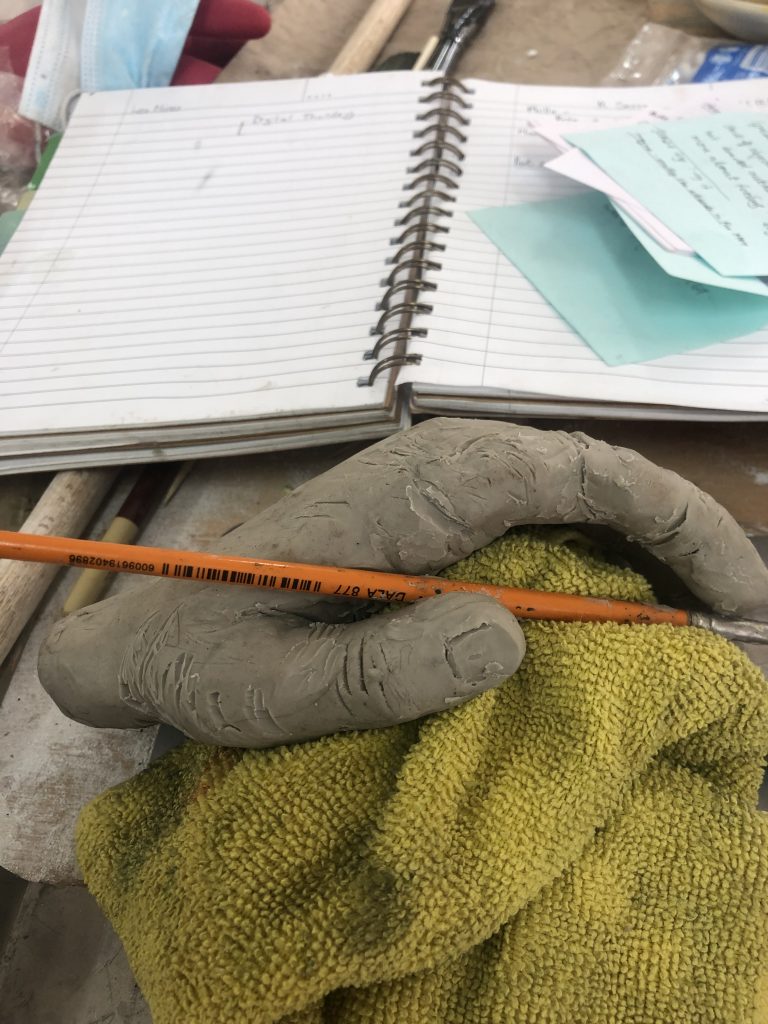

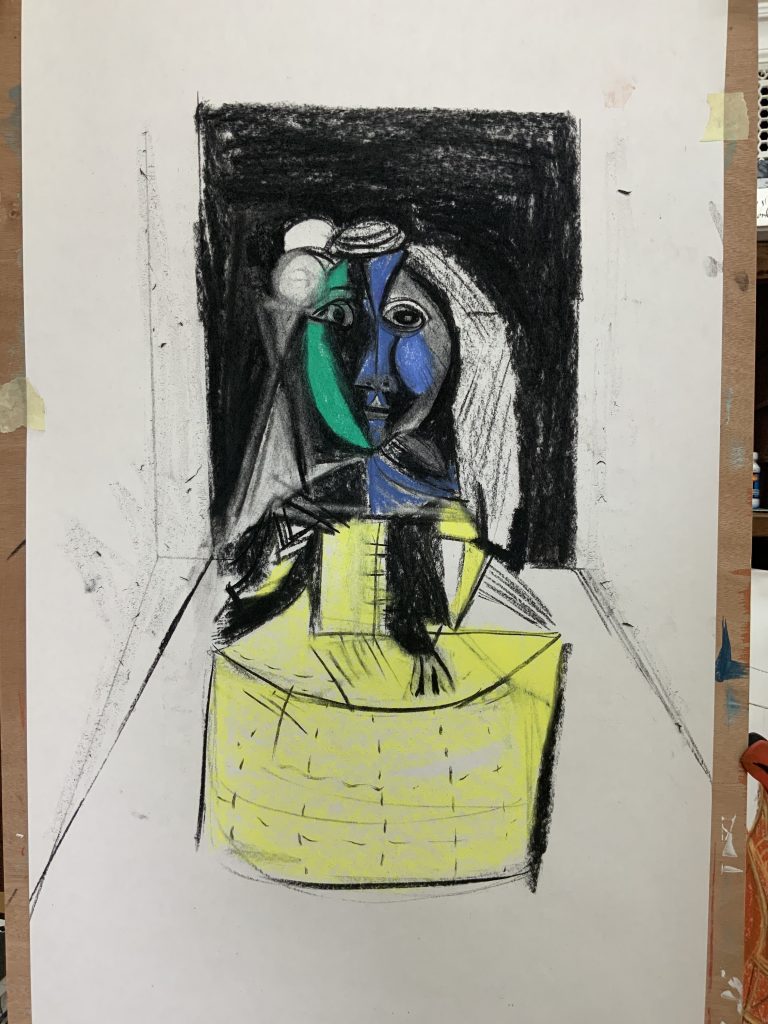
Words like doing and affecting were considered when making during this workshop, and this does not stop with my own making, but is about the influence and presence (virtual) of the rest of the participants and tutors. I would like to see less reasoning and intentionality in my own doing/making. Bennet talks about an “intricate dance” between humanity and non-humanity.
I was intrigued by all the work presented, how different it was, and the inspiration that was experienced during this making. I reflect on how the conversation started with short descriptions by all participants of how their art-making is a process of using different materials like writing, illustration, their own body, photography, textile, painting, researching, drawing…… to become something expressive or works of art. I feel that the workshop provided me with a solid connection with materiality and an aesthetic experience – objects and things imaginary were being created, got a grasp on it, or glimpsed at it.